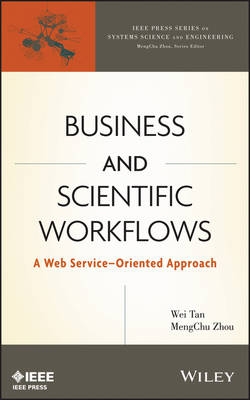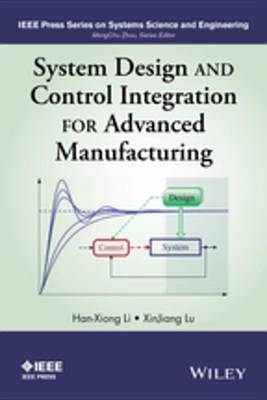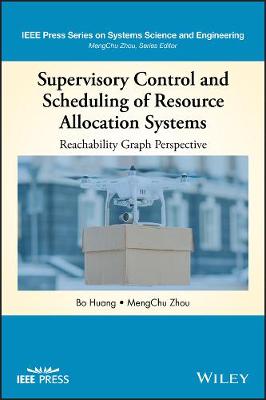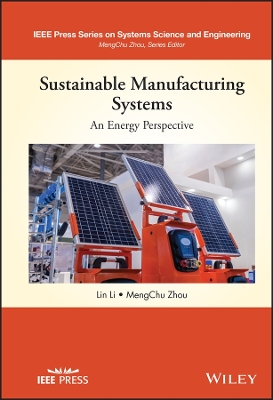IEEE Press Series on Systems Science and Engineering
1 primary work • 5 total works
Book 5
Business and Scientific Workflows – A Web Service–Oriented Approach
by Wei Tan and MengChu Zhou
Contemporary Issues in Systems Science and Engineering
by MengChu Zhou, Han-Xiong Li, and Margot Weijnen
- Chapters are contributed by world-renowned systems engineers
- Chapters include discussions and conclusions
- Readers can grasp each event holistically without having professional expertise in the field
System Design and Control Integration for Advanced Manufacturing
by Han-Xiong Li and Xinjiang Lu
Supervisory Control and Scheduling of Resource Allocation Systems
by Bo Huang and MengChu Zhou
Presents strategies with reachability graph analysis for optimizing resource allocation systems
Supervisory Control and Scheduling of Resource Allocation Systems offers an important guide to Petri net (PN) models and methods for supervisory control and system scheduling of resource allocation systems (RASs). Resource allocation systems are common in automated manufacturing systems, project management systems, cloud data centers, and software engineering systems. The authors-two experts on the topic-present a definition, techniques, models, and state-of-the art applications of supervisory control and scheduling problems.
The book introduces the basic concepts and research background on resource allocation systems and Petri nets. The authors then focus on the deadlock-free supervisor synthesis for RASs using Petri nets. The book also investigates the heuristic scheduling of RASs based on timed Petri nets. Conclusions and open problems are provided in the last section of the book.
This important book:
- Includes multiple methods for supervisory control and scheduling with reachability graphs, and provides illustrative examples
- Reveals how to accelerate the supervisory controller design and system scheduling of RASs based on PN reachability graphs, with optimal or near-optimal results
- Highlights both solution quality and computational speed in RAS deadlock handling and system scheduling
Written for researchers, engineers, scientists, and professionals in system planning and control, engineering, operation, and management, Supervisory Control and Scheduling of Resource Allocation Systems provides an essential guide to the supervisory control and scheduling of resource allocation systems (RASs) using Petri net reachability graphs, which allow for multiple resource acquisitions and flexible routings.
Sustainable Manufacturing Systems: An Energy Persp ective
by Lin Li and MengChu Zhou
Sustainable Manufacturing Systems: An Energy Perspective delivers a comprehensive analysis of energy efficiency in sustainable manufacturing. The book presents manufacturing modeling methods and energy efficiency evaluation and improvement methods for different manufacturing systems. It allows industry professionals to understand the methodologies and techniques being embraced around the world that lead to advanced energy management.
The book offers readers a comprehensive and systematic theoretical foundation for novel manufacturing system modeling, analysis, and control. It concludes with a summary of the insights and applications contained within and a discussion of future research issues that have yet to be grappled with.
Sustainable Manufacturing Systems answers the questions that energy customers, managers, decision makers, and researchers have been asking about sustainable manufacturing. The book's release coincides with recent and profound advances in smart grid applications and will serve as a practical tool to assist industrial engineers in furthering the green revolution. Readers will also benefit from:
- A thorough introduction to energy efficiency in manufacturing systems, including the current state of research and research methodologies
- An exploration of the development of manufacturing methodologies, including mathematical modeling for manufacturing systems and energy efficiency characterization in manufacturing systems
- An analysis of the applications of various methodologies, including electricity demand response for manufacturing systems and energy control and optimization for manufacturing systems utilizing combined heat and power systems
- A discussion of energy efficiency in advanced manufacturing systems, like stereolithography additive manufacturing and cellulosic biofuel manufacturing systems
Perfect for researchers, undergraduate students, and graduate students in engineering disciplines, especially for those majoring in industrial, mechanical, electrical, and environmental engineering, Sustainable Manufacturing Systems will also earn a place in the libraries of management and business students interested in manufacturing system cost performance and energy management.




